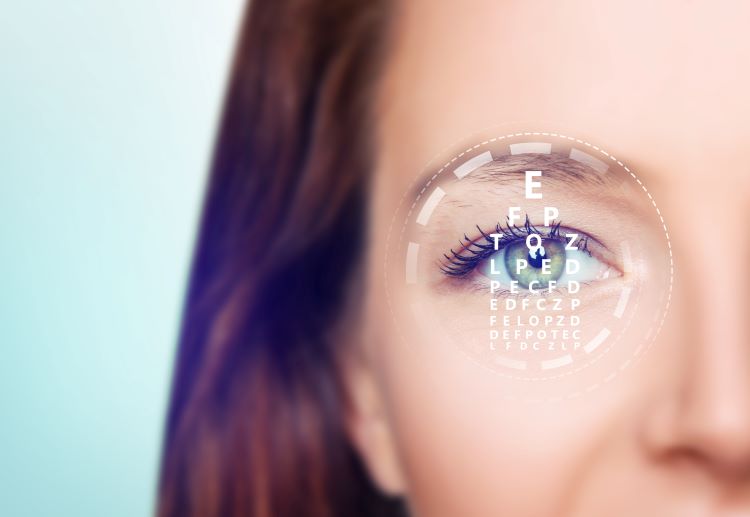Lifestyle and workstation adjustments to manage intermittent vision cloudiness
Intermittent cloudiness in vision can be unsettling and affect daily activities like reading, driving, or working at a screen. This short overview outlines practical lifestyle and workstation adjustments that may reduce episodes, clarify symptoms to watch for, and suggest when to pursue professional optometry or ophthalmology evaluation.

Intermittent vision cloudiness—brief episodes of blurred or hazy eyesight—can arise from many causes including dry eye, refractive shifts, medication side effects, or more serious retinal or neurological issues. Managing these episodes often begins with straightforward lifestyle changes and careful workstation setup to reduce strain and stabilise visual input. Adjustments that support comfortable focusing, reduce glare, and encourage regular breaks can lessen symptom frequency while you pursue appropriate screening and diagnosis.
This article is for informational purposes only and should not be considered medical advice. Please consult a qualified healthcare professional for personalized guidance and treatment.
When to consult optometry or ophthalmology?
If intermittent cloudiness persists, worsens, or occurs with other symptoms such as sudden vision loss, flashing lights, eye pain, or new headaches, arrange a professional evaluation. An optometry visit often addresses routine refraction, prescription updates, and ocular surface issues. Ophthalmology input is needed when structural problems—retinal disease, cataract, glaucoma, or signs pointing to neurology—may be present. Accurate diagnosis determines whether conservative adjustments suffice or medical or surgical treatment is necessary.
Which symptoms suggest a specific diagnosis?
Note patterns and associated symptoms: cloudiness that improves after blinking often indicates dry eye; transient blurring when changing focus may point to refractive error or fluctuating prescription; one-sided persistent haze or flashes can suggest retinal concerns. Neurology-related causes sometimes accompany headaches, weakness, or balance changes. Documenting frequency, duration, triggers, and any accompanying symptoms helps clinicians narrow differential diagnosis and decide on targeted testing.
Workstation changes for clearer eyesight
Ergonomics and visual setup influence how often cloudiness appears. Position screens at arm’s length and slightly below eye level to reduce ocular surface exposure and accommodative strain. Increase font size and contrast to reduce squinting. Control ambient and task lighting to minimise glare and reflections; use an adjustable desk lamp and matte screen filters when needed. Regularly scheduled breaks—such as a 20-20-20 approach (every 20 minutes, look 20 feet away for 20 seconds)—encourage blinking and reduce accommodative fatigue that can worsen transient blur.
Screening and diagnosis: refraction to retinal checks
Comprehensive screening begins with history and refraction to confirm correct prescription for lenses or contact lenses. Additional tests may include slit-lamp examination for the ocular surface, intraocular pressure measurement for glaucoma screening, dilated retinal exam or imaging for retinal pathology, and, when indicated, neurological assessment or imaging. Refraction irregularities, progressive cataract, retinal changes, or neurological signs require different management paths, so timely screening avoids delays in appropriate care.
Prescription lenses and lens care to reduce cloudiness
If inaccurate prescription contributes to intermittent blur, updating eyeglass or contact lens prescriptions can offer immediate improvement. Multifocal wearers sometimes report temporary adjustment-related blur—discuss lens design and fitting with an optometrist. Lens coatings that reduce glare and blue light can aid comfort for prolonged screen use but are not treatments for ocular disease. For contact lens wearers, proper hygiene, solution choice, and limiting extended wear reduce surface deposits and dryness that produce cloudiness.
Rehabilitation, telemedicine, and follow-up care
For persistent or complex cases, vision rehabilitation teams help patients adapt when underlying disease affects function. Telemedicine can provide interim triage and follow-up for clear symptom histories and medication reviews, though in-person retinal or pressure checks remain essential when structural concerns exist. Coordination among optometry, ophthalmology, and neurology is sometimes necessary to manage overlapping causes such as diabetic retinal changes, glaucoma progression, or neuro-ophthalmic conditions.
Conclusion Many episodes of intermittent vision cloudiness respond to simple lifestyle and workstation adjustments combined with appropriate lens correction and regular screening. Keeping a symptom log, ensuring an ergonomic workspace, maintaining ocular surface health, and seeking timely optometry or ophthalmology assessment when warning signs appear will help clarify causes and guide effective management.






